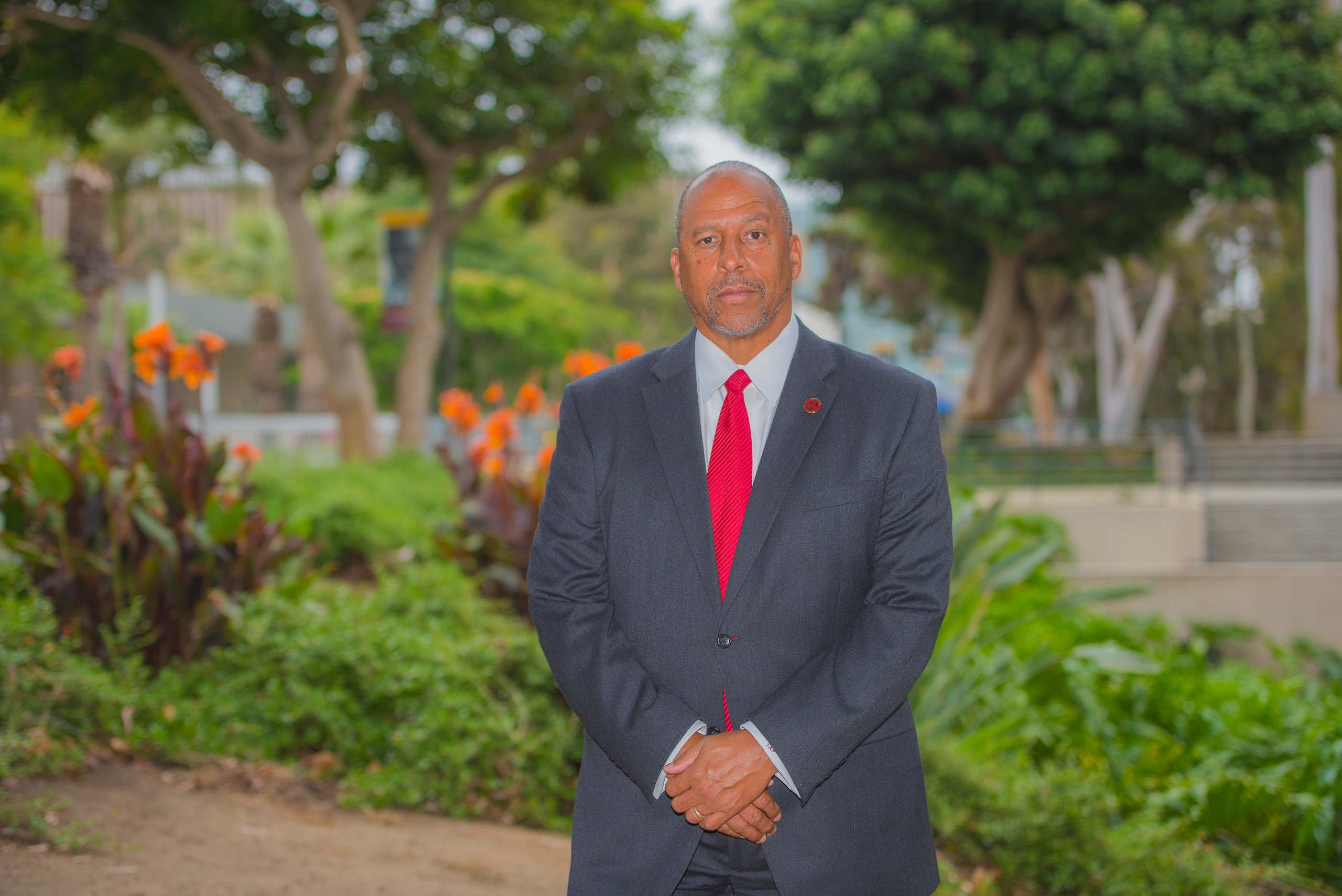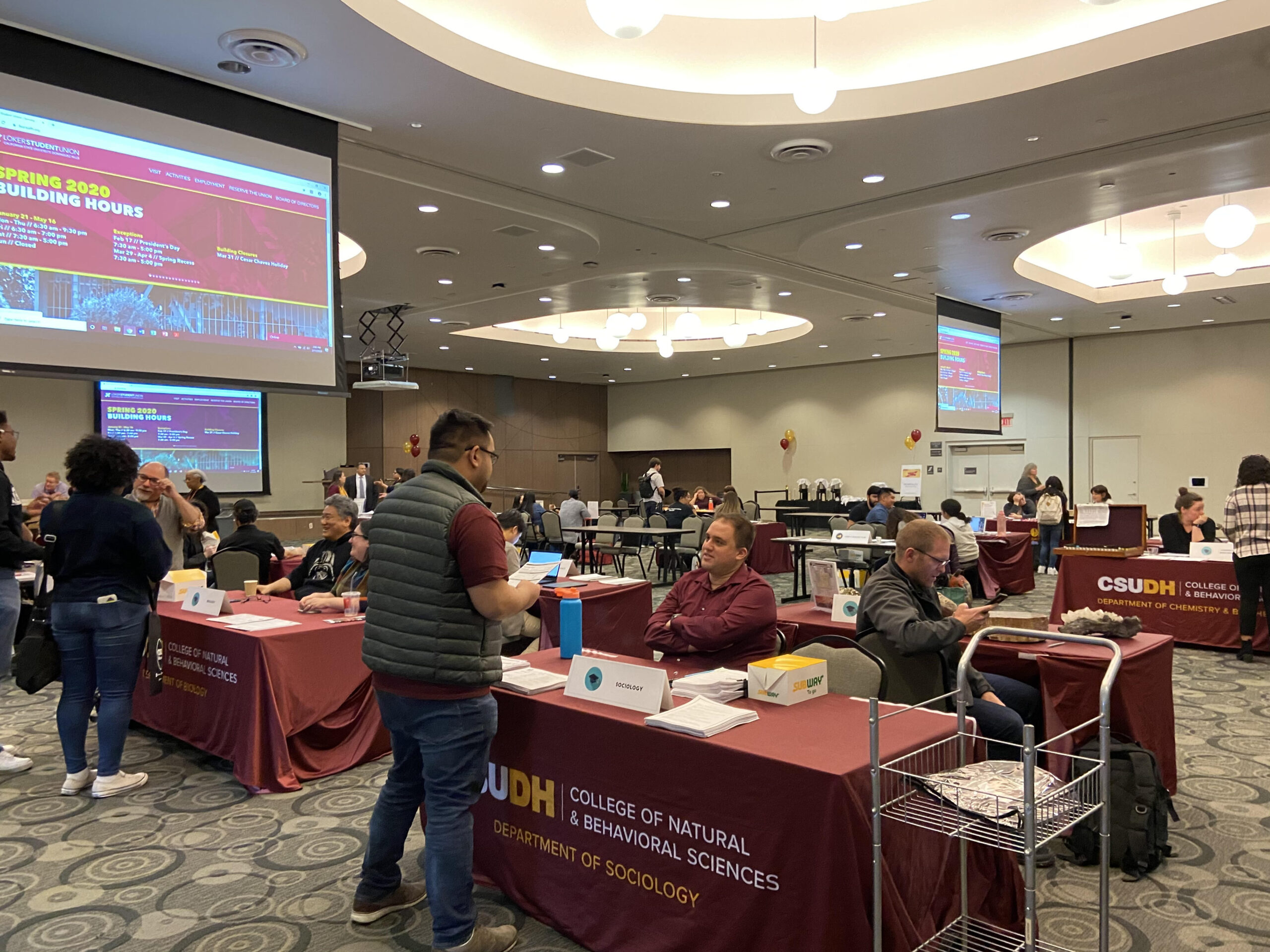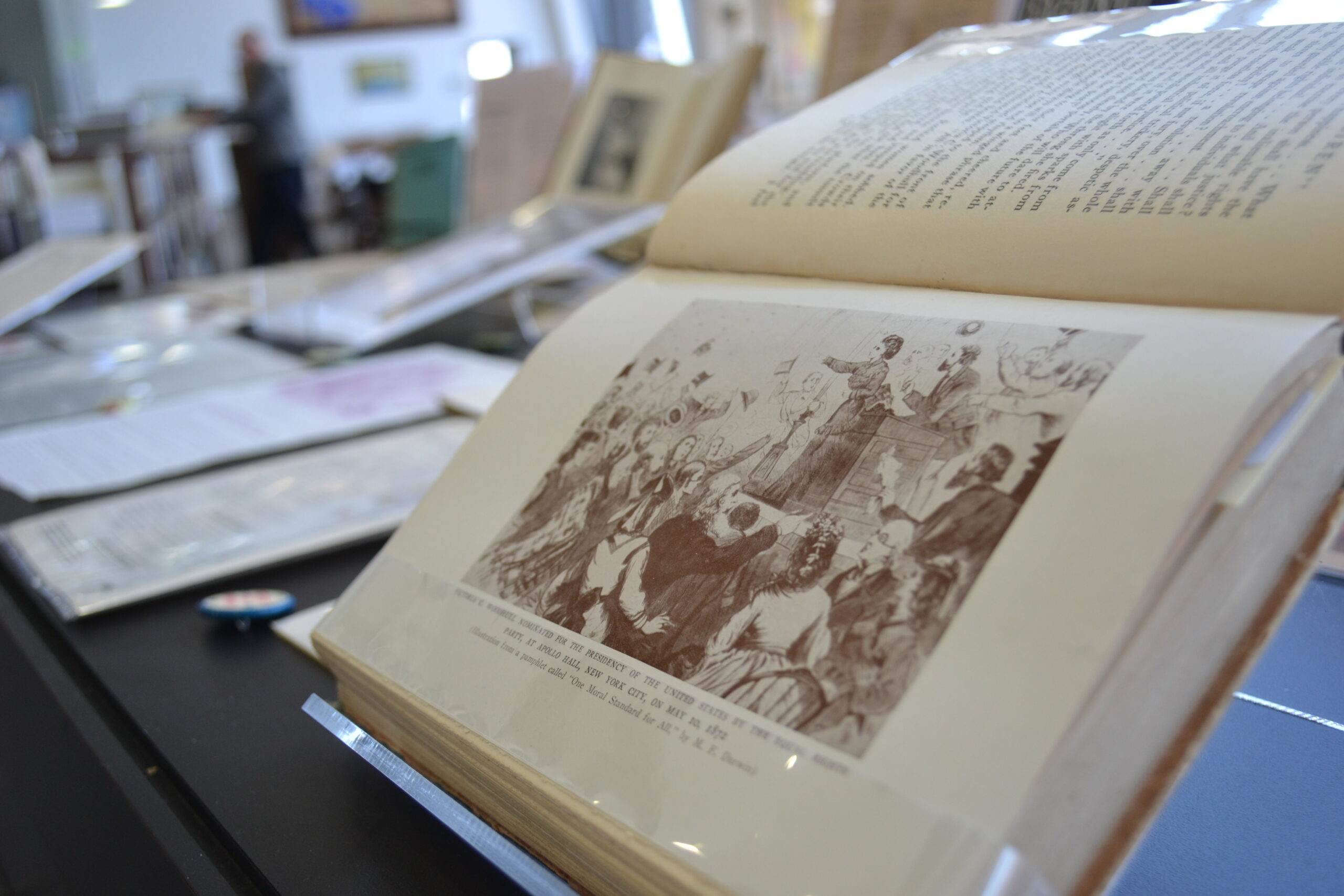CSUDH President Thomas Parham. Photo courtesy of CSUDH
By Saida Maalin, Staff Reporter
As I sat in a Starbucks coffee shop waiting nervously to begin a Zoom interview with California State University, Dominguez Hills, President Thomas A. Parham, I glazed over my interview questions thinking if it would be enough to get to know him in such a short amount of time.
Early morning traffic roared in the background but that wasn’t going to stop me from connecting with President Parham. While in the waiting room via Zoom, I wondered if asking an icebreaker would calm my nerves, but Parham’s enthusiastic introduction allowed me to relax. He said, “tell us a little about yourself,” and so our conversation began.
During the meeting, I was able to ask a range of questions to get to know our President and get some answers to questions CSUDH students and faculty have had including the lack of space on campus, infrastructure project updates and his pay raise.
President Parham’s Pay Raise
“There’s not a lot of detail I can go into about that even though I want to be transparent. I do not control the pay raises that a president receives, that is purely the notion of the chancellor’s office and the board of trustees who decides what we merit,” Parham explained.
When Parham first transferred from the University of California Irvine, where he worked for 33 years, he could not make more than his predecessor. This meant that although the position of president would be a promotion for Parham, it also meant he’d be paid $27,000 less than in his previous role at UCI.
“[At CSUDH] I’m more committed to the students and the mission, not the money. When I first walked in the door, I said that I came to be a servant leader,” Parham continued, “I came because I was committed to work for the mission and the students and this faculty and this campus and this community.”
Do you understand why the faculty is reacting so strongly to the pay raise?
“I was among the presidents…who advocated that nobody on this campus gets paid enough. Nobody does,” Parham answered. “We advocated for them, but if they want to get mad at me, that’s just what we do, but I can’t apologize for the salary they decided to give me.”
He went on to explain that in his most recent performance review, it was discovered that he was under-compensated, “But again, I’m not part of that committee. My evaluation is derived from my meeting with my bosses.”
Retaining Black Students
One of the critiques Parham received when he arrived on campus was the decline in the African American population on campus. “Is there a commitment to want to continue to manage the diversity of the campus in ways that grow the African American population? The answer is yes. Do we recruit specifically on race? The answer is no. Do we want to create the kind of environment that excites African American students and Latinx students and Asian students and white students and the Native American students and international students to be able to come to Dominguez Hills? Yes,” Parham said.
What is a model university and why is that what you want CSUDH to embody?
“A model urban university is one that is not just in the community but of the community,” Parham explained.
Parham said he was proud to see CSUDH rated #2 in the nation for improving the social and economic mobility of students and their families, not so much because of the place they scored, but because it shows that the university is successfully building up students from marginalized communities who have been traditionally blocked out of higher education.
“Urban universities can’t be resource constrained. We’re resource constrained in space because we don’t have enough space on campus. And we don’t have enough money to do what we need to do because of the way the budget formulas are. So when those resource constraints happen, this is how the dynamics of oppression work. Whether you’re faculty or president, whether you’re the groundskeeper or a staff person working in communications, nobody has enough. We don’t have enough space. We don’t have enough people and we don’t have enough money and nobody gets paid enough. But if we all work together, then together we thrive in the space that allows us to move through that collective survival,” Parham said.
There are no fire sprinklers in the Leo Cain Library and other building improvements are being delayed. What’s the holdup?
Parham explained that since the construction of these buildings, safety codes have changed and the campus is currently awaiting approval from the state fire marshal’s office on a revised drawing. He wasn’t too sure when the construction would exactly begin but estimates that it should occur in February.
“I should also say that we are not required to install fire sprinkler systems in the building coded under state of California 1967 plans, which is what the library is coded on. However, the campus does have a long-term plan to place sprinklers in all buildings on campus as funding becomes available,” Parham said. “When we don’t have sufficient resources to do that, and we’re on a waiting list for all these projects to upgrade the dorms, to [install] fire sprinklers,… all these projects are back-ordered. We are simply waiting on state investment and dollars.”
Is there an update on the construction of the Student Health, Wellness and Recreation Center or the power grid upgrade?
“We have several construction projects that are what we call in the schematic design phase of development. Specifically for the Student Health, Wellness and Recreation Center project, that construction is slated to begin in August 2023. We are in the midst of doing the schematic design, the plan, and the budgeting [which] will go before the trustees. Before that, we will go before the chancellor’s committee. And then once that’s approved, we’ll then begin construction and it’ll take us probably a year and a half or two to be able to build a facility,” Parham said.
Construction of the university’s improved electrical system is slated to begin next March with a completion date scheduled for around November 2024. “It has to be completed prior to the finalization of other projects on campus because we can’t build another building if you don’t have sufficient power,” he said. “The dining commons and phase four housing project … construction is slated to begin [next] November and be completed I think by February probably of 2026,” Parham explained. “Everything is on schedule to proceed.”
I finally asked him what the past five years in his position have been like and what he is most proud of. Parham said any leader worth his or her salt has to be cognizant of the fact that they’re only as good as the work produced by the people who work around them.
“It really isn’t what I have accomplished, it’s what we have accomplished together. Both as a team as well as my executive cabinet, all the managers, directors, staff and even the students who are pulling the weight to be able to impact the reputation and ambiance of this campus,” Parham said.
As the fall semester comes to a close, the voices of students, staff and faculty calling on Parham to listen to their needs, concerns and demands continue.



